Dr. Andy Morgan on the Art of Reading Cards
Dr. Andy Morgan is a psychiatrist, a professor, an artist, performer, magician, and expert at Tarot. We sat down to talk about his original new Tarot deck called the Spiritist Mundi Tarot and its companion book about the art of reading cards for self-reflection, creativity and insight.
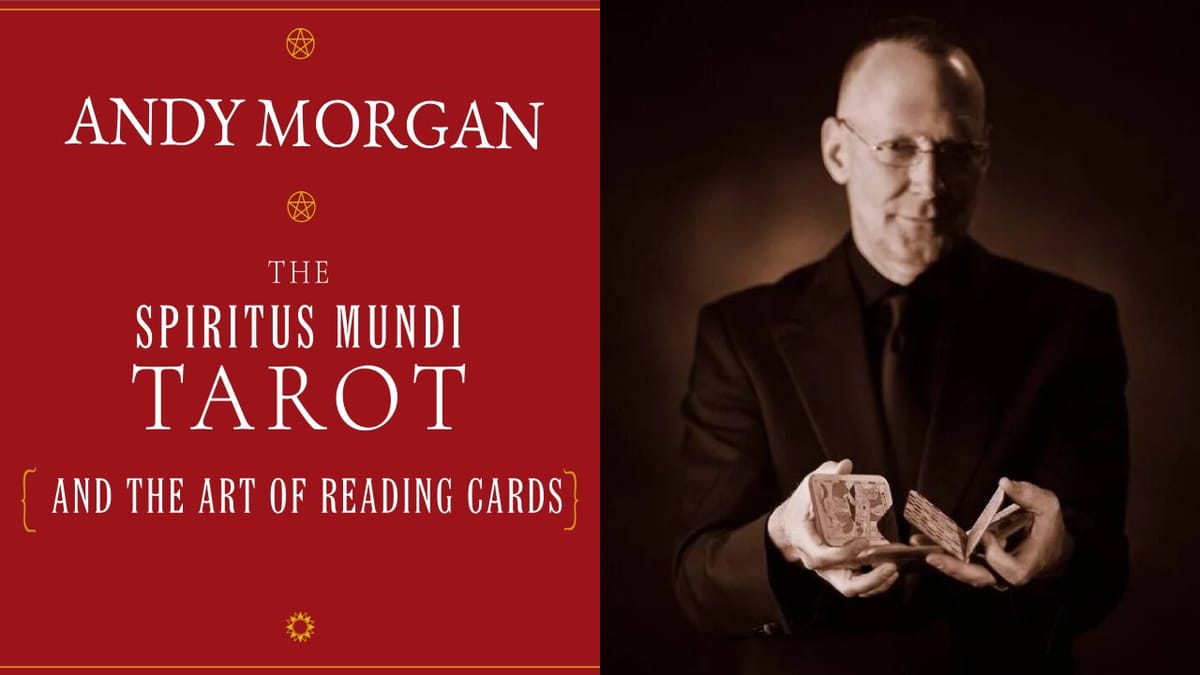
For many people, the word tarot conjures up images of fortune tellers in dark, mysterious rooms. What they may not imagine is... our guest today.
Dr. Andy Morgan is a psychiatrist, a professor, an artist, performer, magician, and expert at tarot. He not only uses the tarot as a tool for self-reflection, he gives tarot card readings and performs live shows about the tarot.
He has created a remarkable new tarot deck called the Tarot Spiritist Mundi and has written a companion book that reimagines the tarot as a tool for reflection, creativity, and freedom.
I am delighted to be talking today with my friend Dr. Andy Morgan.
What follows is a lightly edited transcript of our conversation. You can also view the video of the entire interview on Youtube:
Michael: How are you doing, Andy?
Andy: I'm really well, Michael. Thanks for calling.
Michael: Andy, you’re such an interesting mix of talents. I have to know, how did you first become interested in tarot?
Andy: Oh, well, way back I actually had a family member who read cards - my grandmother. But she didn’t use tarot; she read with regular playing cards. And at that time, I belonged to a church that forbade cards, and tea, coffee, alcohol, all that, so I didn’t pay much attention to them for years.
It wasn’t until my mid-twenties, when I was performing magic, that I got re-fascinated by Tarot again. Then, much more recently, in the last ten years or so, that interest really reawakened. During the pandemic, especially, there was plenty of time to say, “Let me get back into this,” to restudy the cards and reimagine them. And that’s really how the idea of recreating a deck began.
Tarot in Daily Life
Michael: So, before we talk about your deck, I’m interested in knowing how you use tarot in your life.
Andy: Well, for me, the tarot is very much like art, a form of self-exploration, like doing art therapy or drawing. It’s about meditation and relaxation. But I’ll say this, for me, drawing was never relaxing if I started with an idea in my head of what I wanted to create. That always came with too much concern, will it turn out right? Will it look the way I imagined?
So I became a fan of automatic drawing, just scribbling all over a page, turning it around, and discovering shapes and images that start to emerge on their own. I experience tarot in much the same way. I like to see what the images themselves suggest, to let a narrative appear that I hadn’t considered before.
It’s very much like play, like play therapy, really. Playing in a sandbox, playing with art, and being open to serendipity, those pleasant surprises that come from unexpected combinations of images and messages. I use those as a way to reflect on things I might not have otherwise noticed or considered.
I often tell people: humans are funny. We tend to see what we already believe, and we notice what we’re already looking for. What I love about these kinds of creative exercises, especially with tarot, is that they surprise us. They nudge us to think about something in a slightly different way than we might have wanted to.
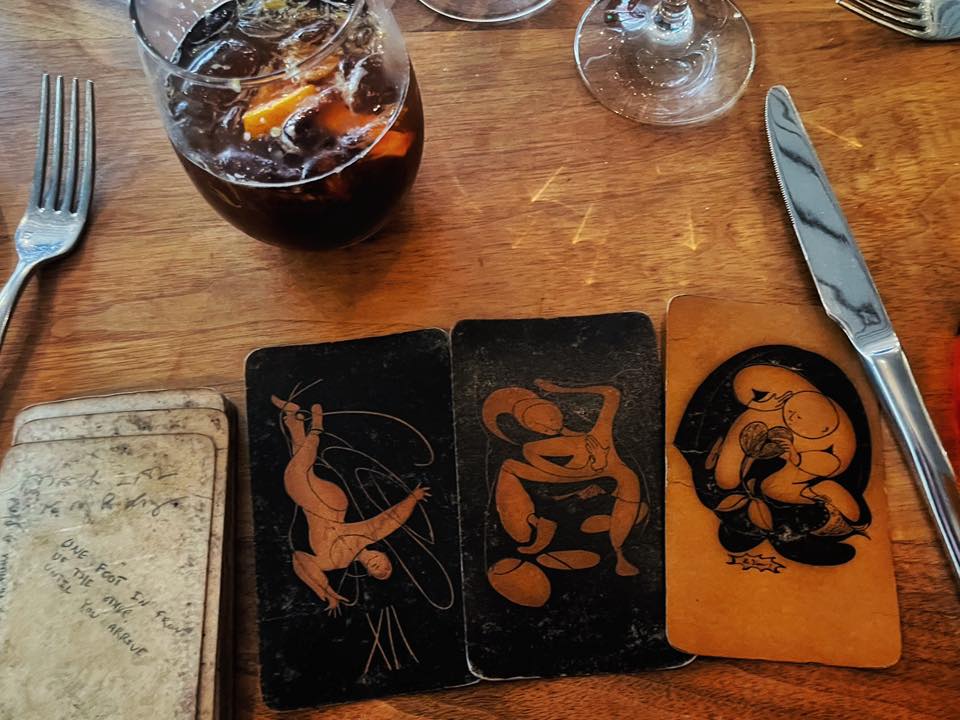
Michael: Interesting. So you you really use the tarot for self-reflection, for meditation?
Andy: I do! All during COVID, it was a great way to start the day. I’d make a cup of coffee, sit in a chair, lay out a few cards, reflect on them, and then simply do a creative writing piece about it. I would send it off to my friend, Enrique Enriquez. Later in the day, he’d send me a note back, reflecting on my reflection about the same three cards. I’d send him a picture of the three cards I’d drawn, and we had this ongoing dialogue and conversation over the course of at least a year.
It was really unusual because you suddenly discover how differently people see things. It opens your eyes to new interpretations of the cards, new possibilities. I found that both mind-expanding and relaxing at the same time.
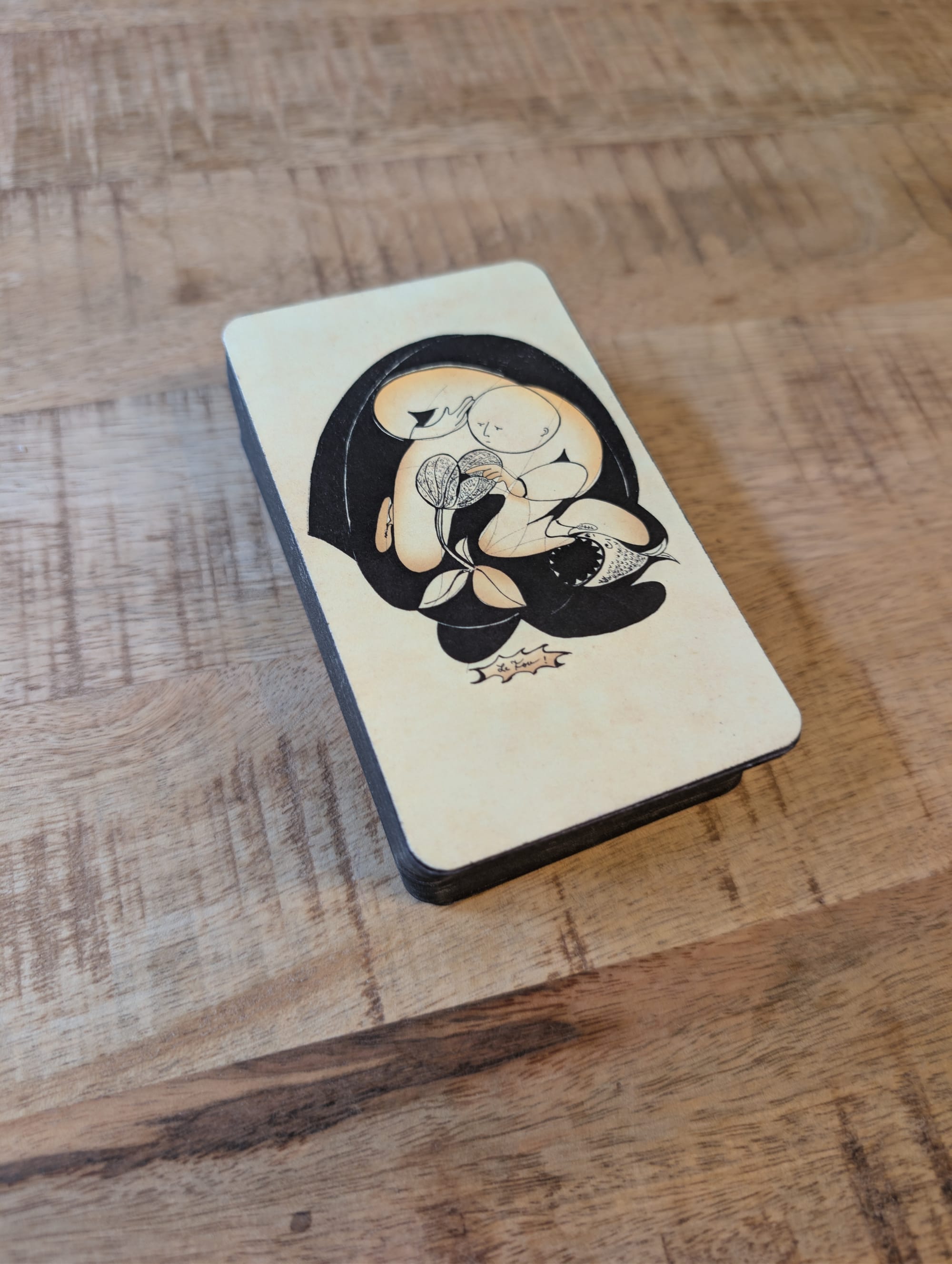
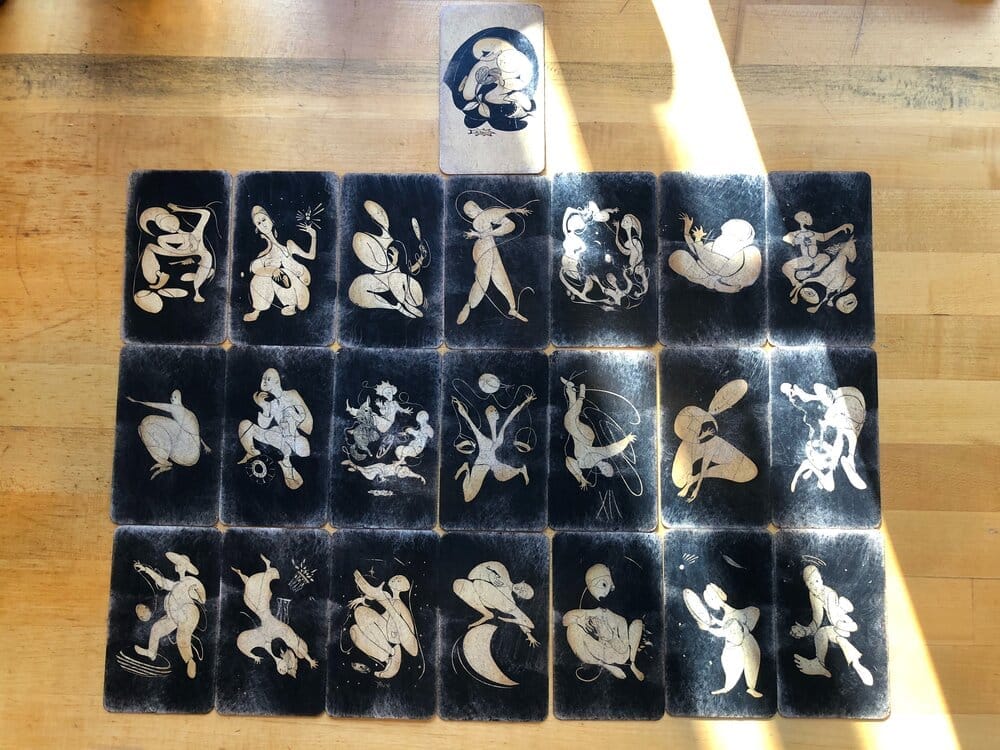
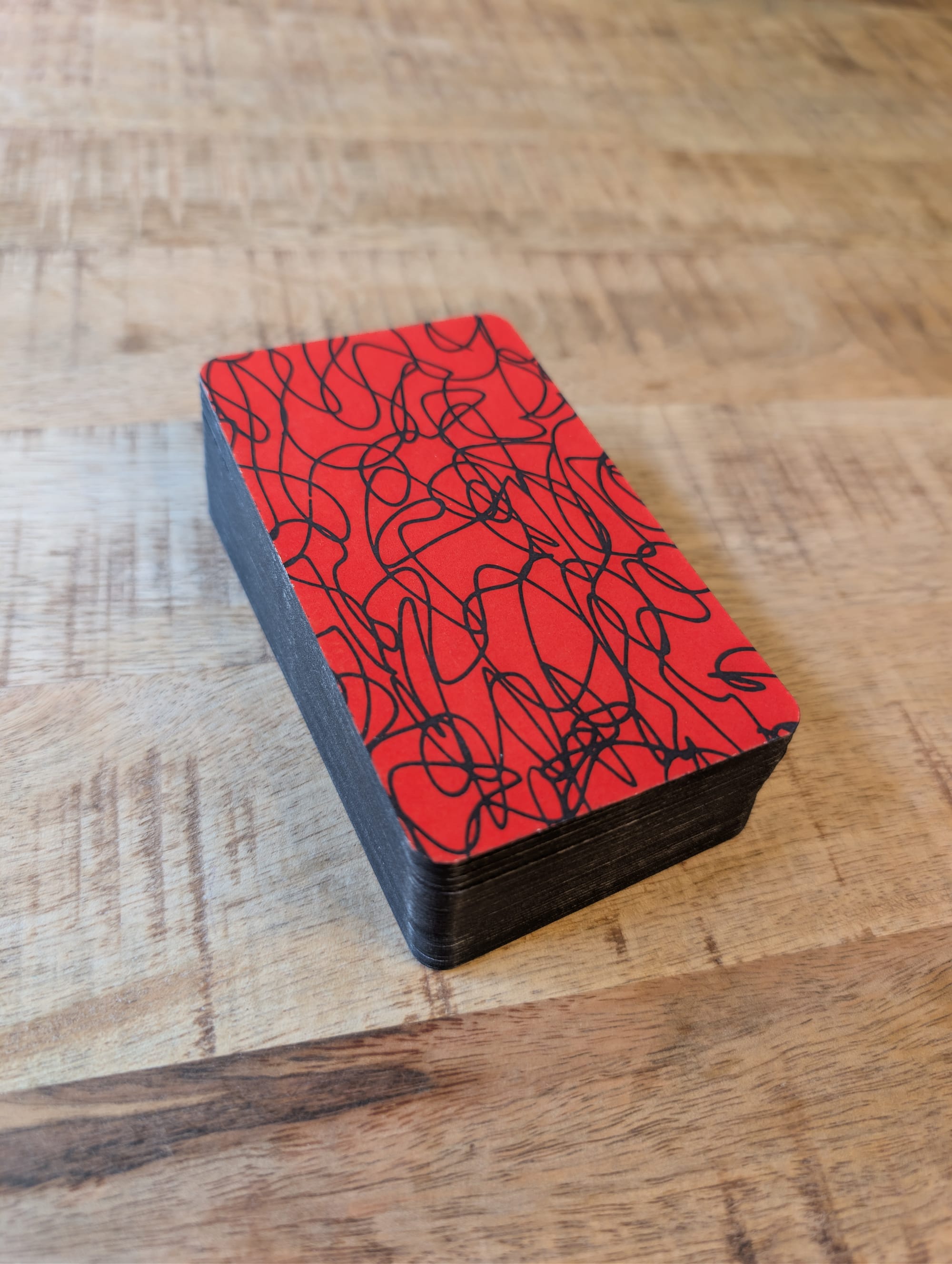
The Tarot Spiritus Mundi Deck by Andy Morgan
Spiritus Mundi Tarot Deck
Michael: You’ve created this pretty amazing deck called the Tarot Spiritist Mundi. What I love about your approach is that it’s completely different from what most people expect of a tarot deck. You’ve really made this deck come alive, blending something that feels like art, psychology, and… I don’t know, something that just feels very different. So tell me, what inspired you to create your own tarot deck?
Andy: Wow. Well, I’d been performing a show prior to the pandemic called The Woman Who Saw All, in which I refer to Tarot. It’s written about my grandmother. I was using a Tarot deck and used to say to my artist friends, “I’d really like something unique for the show. Would you design a tarot deck for me?” And they all said, “No, there are 78 cards. I’m not doing it.” So I thought, “Oh, well, I guess that’s not going to happen. I just won’t have anything special to use in the show other than a deck people are familiar with.”
During the pandemic, I would draw every day, do a meditation every day. And one day, as I was drawing, I suddenly saw an image. It was shortly after a friend of mine had passed during COVID from uterine cancer. I looked at the image, in my deck it’s the Death card, and I remember thinking, “That really would be a cool card representing death, loss, and passing in a tarot deck.”
I thought that was kind of neat, maybe a more monochrome tarot, soft beige and black. And the idea stuck in my head. A couple of days later, the next card that came was Strength. I thought, well, I might be onto something here. These images just seem to be emerging while I’m drawing other things.
Over the course of about two months I suddenly had all but two of the major arcana. And then, of course, I panicked because the other two didn’t arrive. I was missing Judgment and The Chariot. I remember sitting down and trying to draw them, but there was no flow. It didn’t feel relaxed. It didn’t feel anything like the others. I thought, “Well, that’s it. I guess I don’t get a full set of tarot.”
Then, about a month later, I was relaxed, talking with some friends, and doodling. And suddenly, there was The Chariot. Finally, Judgment came along.
And as you said, my cards are slightly different from other people’s. If you know tarot, I’d like to think you can recognize some of the coding and symbolism in them, but they’re very solitary. Maybe that was a side effect of the pandemic and lockdown. There are only two cards in the deck that have more than one figure, the Wheel of Fortune and The World.
I think of them as individual characters. There’s a real freedom in your imagination to play with them because there isn’t much else there. They’re engaged in an activity, they have a look, and for me, they’re really evocative. Their meanings can flip back and forth in tone and mood, depending on the moment. For me, that made reading cards much more fun.
Some Tarot cards, when I look at them, are beautiful, but they seem very fixed in their meaning. It’s like the card is telegraphing, “This is what you must conclude.” Almost like a stop sign that says “Stop.” I’d like to think my cards are more like symbols, they hold multiple meanings at once.
You can flip it. For example, when you look at Strength, one day she looks like she’s leaping away, another day she looks like she’s leaping in. And that’s entirely in the moment. When I pair her with another card, she may be leaping away or leaping in.
That’s how I came to think of the cards as more like nouns, verbs, and adjectives. When I line them up and string them together, they speak on their own, they form a kind of narrative, a structure.
But yes, part of my dissatisfaction with some traditional decks is that they felt too rigid and these just felt more playful.
Why the Name 'Spiritus Mundi'?
Michael: I think you said in the book that you thought the traditional Rider-Waite Tarot felt very still or formal to you. I have to admit, these cards have a very different feel. They don’t feel like that at all, they feel very personal and very first-person, which I find kind of refreshing.
Why did you call it The Spiritist Mundi? What does that mean to you?
Andy: That’s sort of “the spirit of the world”, the spirit world, or the animus of the world. I think I was probably listening to The Police’s Synchronicity album at the time and heard Sting singing “spiritus mundi,” you know, in Synchronicity. And it clicked, because for me it’s a bit like synchronicity, or serendipity if you will. I think they’re both the same. Serendipity is that spontaneous, joyful surprise, that meaningful coincidence when you throw down cards and they suddenly reflect exactly what’s going on in your mind or in your life.
I think it just clicked in that moment, the spirit of the world, right there during the pandemic.
Who is the Deck For?
Michael: Interesting. The cards are unique and beautiful. You can certainly tell that they began as automatic writing scribbles and turned into these great images.
Who do you think this deck is for?
Andy: Well, I’d like to think that the deck has a very broad application. I’d like to think that people who have no familiarity at all with the Tarot could approach the cards and be playful with them.
I’ve really noticed, when I do psychic cocktail events, that many people hear the word “Tarot” and they bristle, they get quite nervous, like, “Oh my God, I might get the Devil, the Death card, or the Tower.” They bring with them certain anxieties or fears about the cards, and that creates a bit of distance between them and the experience.
I like to think that when people are playful, and they can engage with a card, the cards become suddenly much more meaningful and surprising. They become, actually, much more magical because people will say, “Oh, wow. How did that happen? That’s exactly what’s going on in my life right now.”
So I’d like to think the cards are for people who have no experience with Tarot, that they offer a more playful way of engaging with them.
For people who are familiar with Tarot, it’s my way of saying, “I think these cards challenge you in a reading in a slightly different way.” If people are used to reading cards that seem to have fixed or arbitrary meanings, my cards, I would hope, push the reader to relax a little bit and let the cards, in the moment, take on a life of their own.
When I think about the really magical things that have happened during readings, it’s often when you let the cards speak on their own. It becomes altogether more surprising and magical in the moment, more than it would if I just stuck to a traditional meaning of a card.
And then, like with serendipity or synchronicity, people are just shocked and amazed at how specific the reading is to what’s going on for them at the time.
The Spiritus Mundi Tarot book
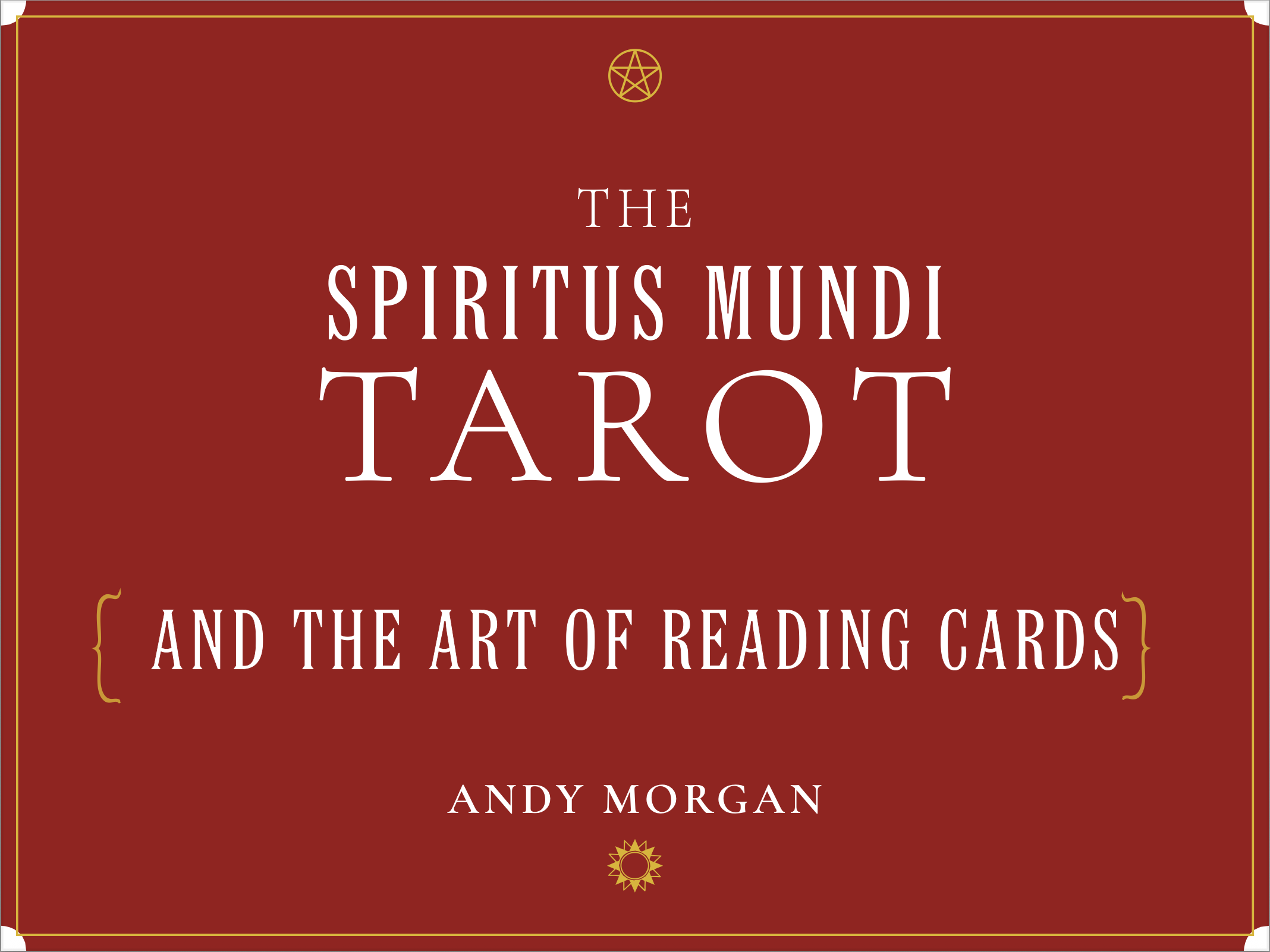
Michael: You created this entire deck of 78 tarot cards and a wonderful companion book that describes the cards and teaches people how to give readings for themselves and others.
Andy: Oh, thank you. Yeah, I’m hoping people enjoy it. There are so many books on the market where you just look up – here’s a card, here’s a meaning. When I thought about writing a book, I thought, well, I don’t really want to do that, because it’s already been done so well by so many people. Why would people need yet another book that just says, “Here’s the meaning of this card,” right?
I thought it might be more interesting to write a book that, after introducing my cards, because they don’t all have labels on them in the majors, would go deeper. So the first part of my book introduces people to the cards and says, these are the traditional ideas that sort of swirl around this card and its imagery. Then the rest of the book is devoted to how to read cards.
I share, hopefully well, this idea of how to begin reading cards. Like, start with one, add another one, and look at how that card may modify it and how it changes. If I add a third card, what is the meaning now of the combination of the three? I love doing a six-card spread, using three pairs of cards.
So I walk people through the process of reading cards with a series of exercises. I include in the book a set of real questions from real readings, along with the actual answers I gave at the time. I also include a few that are more like, “Okay, now you try!” I list out the cards and give the reader a chance to reflect and say, “How would you read these?” Then you can see what meaning came to me at the moment, and if it’s the same one you get, great! If not, go with the meaning you created in the moment, which I think is the more playful way to do it.
My goal in writing the book was to give people more hands-on practice reading cards, because at the end of the day, you just have to get out and do it, right? When people say, “I’d love to read cards,” the most magical things happen, at least to my way of thinking, when you read for another person and see the delight, the surprise, the magic that happens.
I have a particular quirk: I don’t ask people their question. When I read cards, I tell them to frame a question that’s meaningful to them, something they don’t know the answer to but would like insight about, and to keep it private, just in their head, while they mix the cards. Then I tell them, “I’ll tell you what I see in the cards, and you tell me what makes sense.”
It’s surprising to do it that way. It’s sort of scary in one sense, right? Because you’d think, well, if they tell me the question, I can create a narrative. But I find it more lovely, more challenging, more magical, when I tell them, “This is what I see,” and "this is the narrative." Not knowing their question, “this appears to be what the cards are saying.” Then I’ll add, “Now, if your question was related to work, the narrative would shift slightly in this way,” and I read the cards again. “But if your question was personal, and you don’t have to tell me, this is how it would be more tailored to a personal relationship kind of situation.”
Then I sit back and say, “Does that make sense?” Usually people are just silent, nodding, and they go, “Yes!” Some people are quite perplexed because they’ve never told me their question, which I love. Because then I can say, “It was a private thing, just for you. You never have to share your question with me if you don’t want to.”
Some people are just dying to tell me the question at the end, and if they do, I can say, “Oh, well, would you like to extend the reading even more?” Other people are absolutely content to go away, meditating over this magical thing that’s occurred in our interaction and in their mind.
And I do think part of that magic comes from the privacy, keeping the question in their head, and part of it comes from the cards themselves. They have a freedom to really stir things up in a person’s mind, to connect ideas, and to link to one another in a conversational sort of way, more than I personally feel like some other cards do.
6-Card Tarot Readings
Michael: I know that you have a six-card spread that you like to do. Tell me about that.
Andy: I do. What’s behind it is that I’ve always found the big Celtic Cross system interesting for readers, but a bit convoluted for the people you’re reading for. It just seemed like too much for most people to really get their head around.
So I settled on something simpler, a two-card reading that evolved from an idea I first saw from my colleague, Max Maven. He used six cards and had this philosophy that clarity and simplicity make sense to people. If you give them something they can focus on, they can follow it and really appreciate it. They’re not left wondering, “Wait, what was I supposed to be thinking? What does this mean?”
I took that advice and developed my own six-card layout. It’s three pairs of cards. The first pair I treat like the beginning of the Celtic Cross. These two cards represent the underlying themes that are slightly at odds, or not in alignment. They’re not the person’s question, but rather the forces giving rise to that question.
The second pair represents why the person hasn’t reached a resolution yet, why they’re still stuck or haven’t gained insight into the issue. It shows what’s perpetuating the situation.
And the third pair represents the way forward, the recommendation, the next actionable step. As Luke Jermay might say, the next action.
So it’s:
1. The issue underlying the question.
2. Why it hasn’t been resolved.
3. The path forward.
I find that structure gives the person real clarity. They can walk through it and say, “These are the themes, this is why I’m stuck, and this is what I need to do.” It’s very present-focused, but still points toward the future.
For me, it’s more meaningful than the traditional three-card past-present-future layout. Especially with my deck, since the figures are solitary, the cards look as if they’re speaking to one another. When I pair them, it’s like creating longer sentences; the combinations produce a richer, more nuanced reading.
Cards as Nouns, Verbs, Adjectives and Adverbs
Michael: I did like your conflict, cause, and prescription way of doing readings. You also talk about the cards as nouns, verbs, adjectives, and adverbs. I think that’s what you’re getting at now with the conflict within the pairs of cards. Is that right?
Andy: Yeah. When I look at a card, one usually strikes me as the main action and the other one modifies it. Most of the time, the first card is the theme, and the second card modifies its meaning. But sometimes they flip in the moment, you go, “Oh, this one’s modifying that one.”
Traditionally, I’ll lay a card down, and the next card either becomes an adjective or an adverb, something modifying the first. I don’t necessarily do that when reading with a Marseilles deck or something like that, but with my deck, it lends itself very naturally to that noun-verb-adjective-adverb arrangement.
I don’t know exactly how that evolved. No one taught me to do it this way, it just struck me while reading. The more solitary imagery of my deck makes it easy to see a card as an adjective boosting the other card, or as an adverb modifying the activity happening in the first card.
I encourage people to play with it that way, because it makes readings less intimidating. You can try out a narrative, and there’s nothing wrong with exploring multiple possibilities. That’s the beauty of symbolism, a card can hold two or three meanings at once. You can try different interpretations and see which one resonates. Then that builds a downstream effect for the next layer and the next.
With my deck, you really distill the traditional, historic meaning of a card into almost a single idea, a word or a concept. That makes it easy to form sentences with the cards, which is freeing. It also simplifies readings because it shows how the cards interact and gives ideas of what two cards mean together.
Michael: They’re great. I’d actually like to look at some of these cards and talk about them a little, to show people what the cards are like.
The Death Card
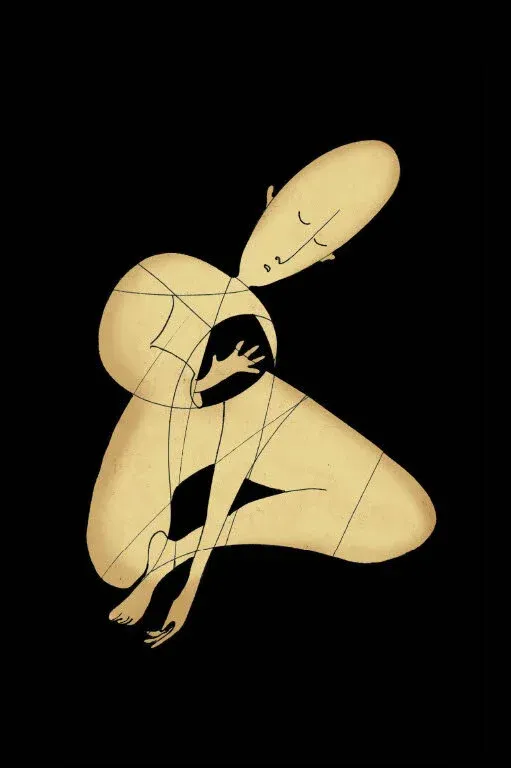
Michael: You mentioned that the first card you completed was the Death card. You also mentioned that you did an automatic drawing initially, scribbling, and out of that scribble this particular card emerged. Can you tell us a little bit about this card and how it sets the philosophical tone for the rest of the deck?
Andy: When you look at the card, there’s a figure with its hand over its heart, but there’s also a giant black space, which you could perceive either as a hole or something opaque. The posture struck me right away as sad.
When we think of the Death card traditionally, it’s often associated with harvest, turnover, beheaded people, skeletons, imagery that can be kind of grim. Some people might connect it to the Day of the Dead, the end of the world, or the Grim Reaper.
For me, the Death card became about what you hang on to and what you let go of. It’s not without an emotional price, it’s always sad to let go of something you’ve cared about, held on to for security, or cherished. But life moves forward.
In this figure, there is sadness, but it’s not angst, the character isn’t agitated. The hand over the heart struck me as saying that, sometimes you’re not really sure what you need to let go of. It can be opaque at times, not immediately clear what has been holding you back or what would let you move forward.
So the Death card, for me, is about change, and change is always connected to what you hang on to and what you let go of. That’s part of the human dilemma: we attach, but growth requires exploration and sometimes departure from what we’ve known.
I wanted this card to convey that without looking violent or frightening. The emotion is still intense, realizing you must let go of something dear, but the imagery isn’t scary.
The Fool
Michael: Traditional Death card imagery can be upsetting to people, so I think this approach is refreshing.
Whenever I look at a new tarot deck and am evaluating it, I immediately go to a very few specific cards that I know well to see how they’re handled. The Death card is one of them. The other one very quickly is the Fool. I always want to see how the artist interprets the Fool.
So, tell me about your Fool.
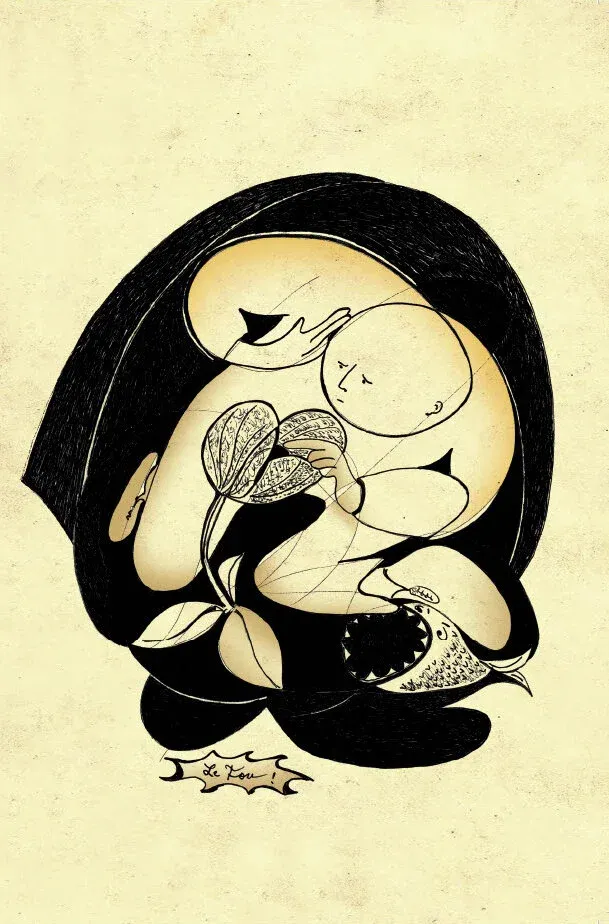
Andy: Well, Michael, as you know, these things emerge on paper. My fool is a character who looks peacefully absorbed in examining some sort of flower or tulip, completely lost in the enjoyment of what he’s doing. But he doesn’t notice this giant fish with jaws coming up to bite him in the ankle or something.
That always reminded me of the traditional imagery of the Fool. In the Rider–Waite deck, he’s walking out into the big wide world and might walk right off a cliff because he’s so enamored by the view. In the Tarot de Marseilles, older versions show the Fool walking along, his pants down, with an animal that might scratch him, oblivious because his mind is elsewhere.
In this deck, my Fool represents being completely absorbed in something wonderful. There’s a beauty in that: when we can get lost in something, we can play, lose ourselves in music or a book, leave all our cares behind. The card flips between being fully absorbed and the side effect of that absorption, being clueless about something that could happen while you’re engaged.
For me, that’s the imagery: what can capture our focus and attention in a playful, positive, engaging way? It’s not obsessive, that’s a different card. This one is about absolute delight. It’s like a baby enamored with their mother’s face, completely locked in. The world is that flower at that moment.
Michael: If you had to distill it down to one word or phrase, what would it be?
Andy: Oh, for the Fool, I’d say joyful absorption. Just absorption.
The Devil
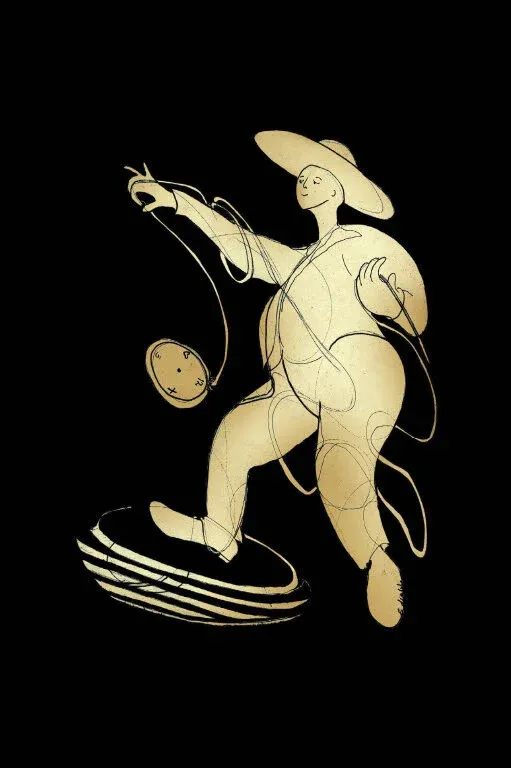
Michael: So, one of the other big cards I always look at when I evaluate a brand-new tarot deck is, of course, the Devil. I have to say that your Devil is my favorite of all time because you framed it in a way that’s super useful. Your Devil is this sort of smooth Southern gentleman with a pocket watch with no hands. It’s all about temptation. So, what does this card say about temptation to you?
Andy: Yeah. Well, for me, it’s like this: when you think about why people fall for conmen, the thing that lures us always comes from inside. The reason people fall for cons is usually linked to desire or greed, wanting something we probably shouldn’t pursue.
For me, the Devil card is really about the temptations that come from within. Temptation can steal our attention. I imagined him playing with the pocket watch, it has his attention. That’s how it works: our focus gets stolen by the “shiny new thing,” usually tied to a desire we have.
So in a reading, the card challenges the reader to ask: What is stealing my focus or attention? What temptation is coming from a source that might be selfish or unhelpful, potentially binding me in a way that could work to my detriment? It’s more about internal compulsion than external danger.
That perspective made more sense to me than the traditional depiction with two little demons chained to the Devil.
Michael: Yeah, I think that’s what I find so helpful. It takes the concept out of the abstract, external realm and makes it about compulsion or obsession, something tangible, first-person, and highly relatable to the reader’s current situation or question.
Andy: Exactly. In a reading, it pushes you inward. It encourages self-reflection: What am I doing that’s playing an active role in this dilemma I’m experiencing?
The Lovers, Renamed The Choice
Michael: The other one I really like… hang on, one sec, I’m going to pull it out. It’s the Lovers card, or the Choice. I found it fascinating that in your deck, the Lovers card has been renamed the Choice. I didn’t really know the history of that or if it came from any historical tarot meaning, but I liked it very much because it made the whole idea tangible, very first-person, something people can relate to. Can you show that card again?
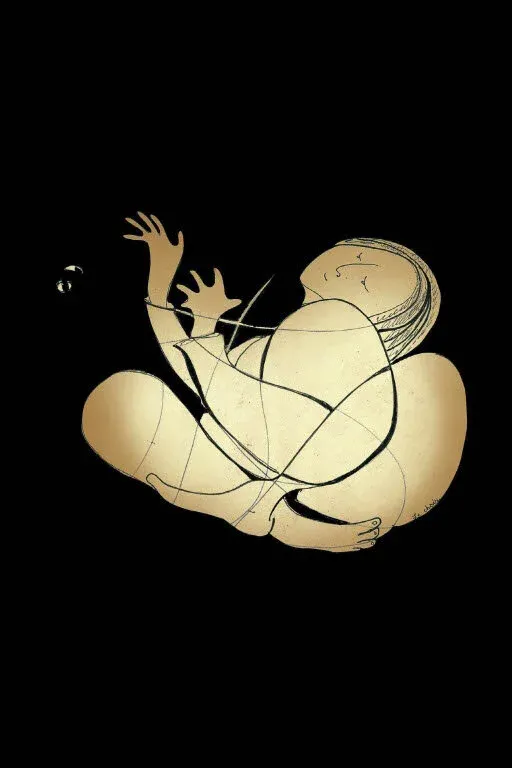
Andy: Absolutely.
Michael: So this is your Choice card. Can you tell me more about why you renamed it and what that’s about?
Andy: Yeah. Historically, the earliest cards we have are really from the 15th century, maybe around 1440. Some of these are at the Beinecke Library at Yale. The early depiction, from the Visconti-Sforza family, was really about marriage. The daughter getting married. So initially, the card was about a choice in marriage.
Later, maybe fifty years later, the card became associated with long-term decision-making, making a commitment over time. In some versions, the young man appears to be choosing between two women. People have debated whether one is a mother, a mother-in-law, or a wife, but it’s clearly about making a choice in life.
For me, when I was drawing and thinking about it, I wanted to avoid making the card too gendered, because those early cards were very much about traditional marriage. I saw the essence of the card as: How do we make choices about something that’s a long-term commitment, to someone, something, some idea? That’s why I called it the Choice. It’s a reminder that our decisions can have long-term consequences, whether we fully evaluate them or not. Choices bind us.
When I saw the figure that emerged, it was curled up, almost bound, staring off into the dark, with a little pair of eyes in the distance. I thought about how we can be so enamored by something that we lose sight of the long-term impact of our choices. In a reading, this concept becomes very useful. It asks: Are you aware of the long-term consequences of the choice you made or are contemplating? Have you thought about what comes next?
Very often, you can see people suddenly start to grin and reflect. In the moment, we’re passionate about something, a person, an idea, whatever captures our attention. But sometimes what we miss is that saying “yes” or “no” might be irreversible for a long time.
For me, the Choice card is much more useful than simply reading it as “I see romance in your future.” Historically, the card was about relationships, family arrangements, dowries, and resources, not just romantic love. So renaming it the Choice allowed me to capture the broader, timeless essence: decision-making, commitment, and consequences, in a way that resonates today.
The Hanged Man
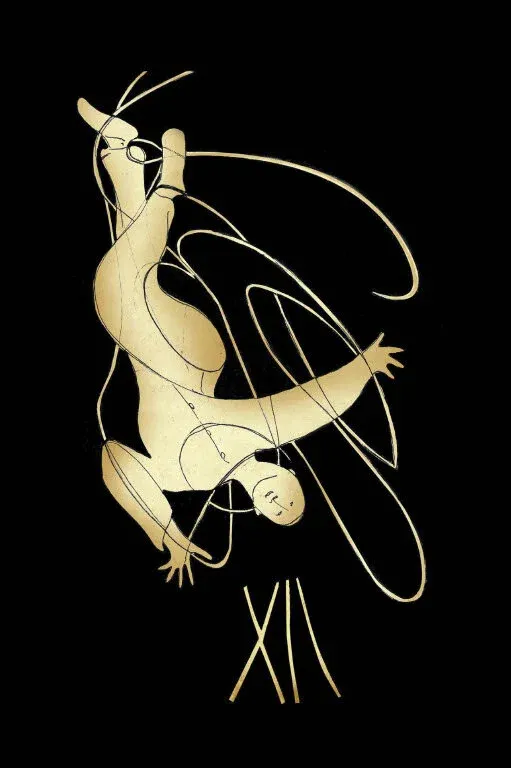
Michael: You mentioned that a lot of your cards have multiple directions they can go. I think one example of that is the Hanged Man card, which I think is lovely, someone who’s sort of upside down. But as you’ve mentioned, if you turn him over, it’s like he’s dancing. It’s a whole different ballgame at that point, which I think is really cool.
Andy: Yeah. I remember when that card emerged. When you look at him, you oscillate: is he upside down but finally free of the tangled lines around him, or is he like a bit stuck in a spider’s web, not moving? Those meanings oscillate back and forth for me.
In a reading, without knowing someone’s question, I see the Hanged Man as a really interesting character. Is he paused in an action, or is he stuck? Would he rather be dancing? Now he’s upside down, almost to get a different view. Then I settle on a meaning, but I mention the alternatives. Depending on the card he’s paired with, the adjective or adverb component snaps the meaning one way or the other: either he’s relatively stuck right now, or the card says, “Take a big pause; hanging out would be the best thing to do right now.”
The Minor Arcana
Michael: So, you’ve done an entire tarot deck, all the cards. Your minor arcana cards, you say, are symbols, not signs. Can you tell me what you mean by that?
Andy: So, by a symbol, I mean something that holds multiple meanings. A sign usually tells us exactly what we should do or what something means. I like to think of a symbol as something that excites your mind and raises a bunch of possibilities. Then, as you pair the cards, it begins to lock down some of those possibilities in that moment. On a different day, you might string them along and see a slightly different trajectory for that moment.
With the pips, or the minors, people say, “Look at two of cups,” or “three of swords.” People think of swords as wands, things we do things with. It’s not totally about relationships. Swords can represent action, aggression, conflict, or ruminating thoughts. For me, when I look at a card and see spinning swords, I think: is this about obsessing over how to take action? I can’t grab the sword while it’s spinning, or am I tossing it around, trying to figure out which course of action to take? I see the card in motion, that’s just how my brain works.
Someone else might look and see three people holding swords and ask, “What are they doing?” If they represent three people, they’re not all in coordination. They’re at different angles. To me, that means something’s unsettled, the course of action isn’t clear. It’s churning.
Whereas, if I see two cups, I think, well, are they cuddling up together, or has one cup been knocked over? In the moment, that might resonate with: I’ve upset someone in a relationship, or oh, they’re close, this relationship is warming up, becoming intimate. That meaning flips back and forth for me when I’m doing a reading.
The Tarot Spiritus Mundi Court Cards
Michael: I know all of your number cards in the minor arcana don’t have people in them, but your court cards do, which I find kind of fascinating.
Is this one of the queens?
Andy: Uh, that’s a page. You’re holding a page. All the pages in my deck are reaching for their quality. So if it’s a sword, pentacle, wand, or cup, the pages don’t have it in their grasp.
The queens, for some reason. I can’t explain it, it just happened, are all either throwing down their trait or holding it off. So, as you can see, the Queen of Coins is dropping money, whatever that means for a moment. The Queen of Wands is either holding it out there with the power of her mind, or she’s not taking it. Her hand is up.
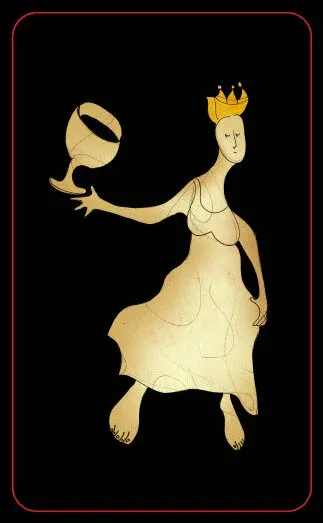
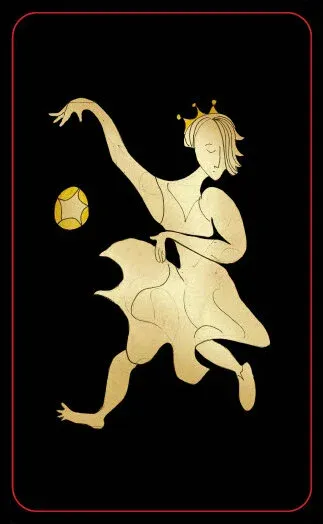
The Queens of Cups and Coins from the Spiritus Mundi Tarot
Queens represent a person who is fully capable of exercising the quality of that suit, but they may be choosing not to. They may either choose to take a specific action or not implement it. Whereas the kings are totally in possession of what they’ve got and enjoying it thoroughly. The King of Wands, for example, he’s almost stroking the wand, it’s like, “I got this.”
I didn’t even realize this until I laid all the cards out. I was doing an art show in New York, and the curator said, “I’m putting all the cards up on the wall.” I laid them out and suddenly realized, oh my gosh, the queens are all dropping something, the kings are all holding onto theirs, and they’re faced in opposite directions. That’s what automatic drawing does. I had no realization of that at the time. You can see the rhythm going across all the different cards.
There’s a bit of a theme that evolved with the sixes, there are always three in the air and three aligned. Other than that, I don’t know of any other theme in the pips.
For people used to reading more traditional cards in color, there are systems that say, “Well, this card went from a warm color to a cool color, there’s cooling off.” In mine, there’s not much color. They excite your mind through activity and interaction more than color changes. I love color, but it just made more sense for these not to have any.
Tarot for Self Reflection
Michael: I find your cards very easy to use for self-reflection. And you’ve said, I think in your book, that the tarot can be an antidote to our human tendency to be myopic.
Andy: Yeah, you know, we have a tendency, as I said, to look for information that confirms what we already think. People call that confirmation bias, or myopia, getting a narrow view of things and not really looking around.
Some people misunderstand the cards. They’ll say, “Oh, you only see what you’re looking for in cards.” And I’m like, well, you can do that, but when you have a good reading and you’re really open, sometimes the cards suggest stuff you don’t want to think about. And you go, “No, I can’t relate to it.”
I think that’s the coolest way to look at cards: ask yourself, why didn’t I want to see that meaning in the card? Why would I prefer this narrative over that one? You can challenge yourself and say, “I’d rather it said this, but it also appears to be saying that.” In that way, cards challenge us to break out of the mindset it’s so easy to get locked into. They expand your freedom and the number of choices you have when you’re not myopic.
That’s why I always say to people, “Cards enhance your free will. They don’t restrict it.” People say, “Oh, card reading means you have no free will. Everything’s predicted.” I say, “No, that’s not really how they work.”
I did a reading the other week at a psychic cocktail event. There was a young woman who looked a little disappointed at the end because she said, “Yes, this all makes sense, but I do have a question. So they’re not going to tell me what to do?” And I said, “You were looking for a yes or no response?” She said, “Yeah, I kind of wanted them to tell me.”
I said, “I’m glad you mentioned this. Cards don’t do that. Cards tell you: here are the paths, but you’re in the driver’s seat. Here are the things to consider as you make the choice. These are the alternatives. These are the things that go together. There are consequences to saying no, consequences to saying yes. But you do it with your eyes wide open.”
She looked a little more disappointed for a moment, so I added, “And when you think about it, that’s really what gives you freedom in life. No one tells you what to do. You get to own it, but you know why you’re making a choice. You’re doing it with your eyes open. Now you have more clarity, or you may choose another option.”
That’s what I love about cards. They move it away from the movie-and-TV-land view of card reading, you know, divination that just says, “You will do this.” That’s never been interesting to me. What’s interesting is creativity in life: something new, something brand-new emerges out of a spontaneous arrangement of cards, and something new happens in front of the person in the moment. They can create something new. That’s why it’s really magical.
I have neuroscience friends who ask, “How do you read cards? You’re a neuroscientist.” I say, “Yeah.” I remember one fellow came in for a reading at a pub. He’s a neuroscientist, and he was just stunned. He goes, “But how do they do that? How would it know that? I didn’t tell you my question.” I said, “Yeah, that happens.” He said, “But how?” I asked, “Did you just have a great dinner?” He said, “Yeah.” I asked, “Did you sit back after the meal and think, why does this meal taste so good? How did that happen?” He said, “No, I just enjoyed it.” I said, “There you go.”
It’s the same with the cards. We’re human beings, and divination readings have been around in many forms for thousands of years. The Tarot is a wonderful version of that. I tell people to enjoy it. If you don’t, you can say, "they're just ink on paper," and wander away. But most people can’t. Once it has a meaning, they go, “How does that happen?” I say, “It’s magic.”
Michael: It really is. I’ve really enjoyed sitting down and using the cards and giving myself readings. You’re right: they speak to you in ways you don’t expect, and they’re always instructive, which I think is pretty cool.
Andy: It is funny. At the end of the week, if you look back, you go, “That’s exactly what I had on Monday.” You didn’t make yourself look back over the week, and you go, “That is right. That is what happened.” And you just let it go. It’s sort of serendipity. It’s beautiful.
Spiritus Mundi Tarot for Current Tarot Readers
Michael: How do you think people, Tarot card readers who are used to a traditional Tarot deck, would adapt to using your deck? Do you think it’s a big mind shift between the two? Have you had feedback from people who know the tarot well?
Andy: I was down in New Orleans, around the square where there are lots of readers, and I was carrying my bar cards. I call them my bar cards... these were some cards I originally had printed but the printer didn’t really know what he was doing, so I ended up aging them by pouring coffee on them and wearing them in. They're the cards I carry with me.
When I showed them to other readers, they were fascinated. They were very tender with the cards. A couple of comments stood out right away: one was, “Everyone is so young in this deck,” because these aren’t old figures. That hadn’t occurred to me at all. Others said, “They’re so expressive. I can play with them in a way…” I’ve never had anybody go, “Oh my god, I wouldn’t know what to do with these.” Readers I’ve shared the cards with have been really warm and receptive, and they found them easy to adapt to.
I know a woman in England who reads professionally, and she now uses them as her preferred deck. She said her clients, when given a choice, are fascinated by these individual figures more than traditional cards. She said, “I just use these now, because people can relate to them.” I thought, “Oh, that’s really kind.”
I think there may be some people who don’t relate to them, if they prefer a deck that conveys mystery, opacity, or a more mystical aura. My cards aren’t meant to look mysterious, they’re meant to be accessible. There are little symbols in mine, and if people look closely they might try to decipher them, but they’re not opaque in the traditional sense. They were just me relating to the cards in my way.
Early on, when I did readings in the park for fundraising events, I didn’t know if people would want readings with my cards or a traditional Tarot de Marseilles deck. I put both decks out. I remember that first day: everybody went for mine. They said, “I’ve never seen those before. Let’s do that.” On one hand, it was flattering. On the other hand, I realized that the freshness and novelty opened a space for a magical and creative experience. People couldn’t mentally fall back on, “Oh, I’ve seen those cards before. This is what they mean,” which often locks the mind into preset meanings.
When a deck is novel, it opens the mind: “What comes next? What happens next?” It opens a creative play space for real magic to happen for the person. And that’s what I think divination and readings are: magical events that open our eyes to things we hadn’t thought about in that particular way.
Doing Readings For Others
Michael: You're the only person I know who carries your bar cards around all the time.
Andy: I do. For years now.
Michael: You're giving people tarot readings everywhere. And I’ve never seen anyone who wasn’t completely baffled by how the cards could reflect them so clearly. They always have such a joyous reaction. It’s always a great experience, always fun.
Andy: Yeah, that’s been my experience too. Recently I’ve even been experimenting with what I call “speed readings.” A magician in England approached me and said, “I’ve never read cards before, but I want to learn how.” So I sent him some of my cards and started sending him little video clips.
The other day, I was leaving the gym and stopped at the counter. I asked the woman there, “Would you like a little reading?” And she said, “Yes.” I asked, “How much time do we have? You’re working.” She said, “Maybe two minutes.” And I said, “Perfect. Divination happens in a flash.”
Someone held the camera, and I did a quick reading, a minute and a half tops. And you can see her at the end, going, “Yes, that’s it. That makes perfect sense. Thank you!” and then running off to get back to work.
Other readings, of course, can go on for fifteen or twenty minutes when there’s more time. But what’s consistent is that people always catch that sense of playfulness in it, and that’s what really strikes me.
I think that’s the best way to gain insight. For years, working as a psychiatrist, I noticed something: when someone’s facing a real challenge and needs to make a change in their life, it’s always scary. Unless they either deeply trust the person they’re working with or can find a sense of play, it’s very hard to take that leap.
So I think that sensibility has subtly shaped the way I do all readings. They’re supportive, but also playful, because play opens up possibility. It’s something you can explore. And when you approach insight in that way, people find the strength and courage to face what’s ahead. They feel supported, and that support, mixed with playfulness, gives them the courage to act.
Live Tarot Shows
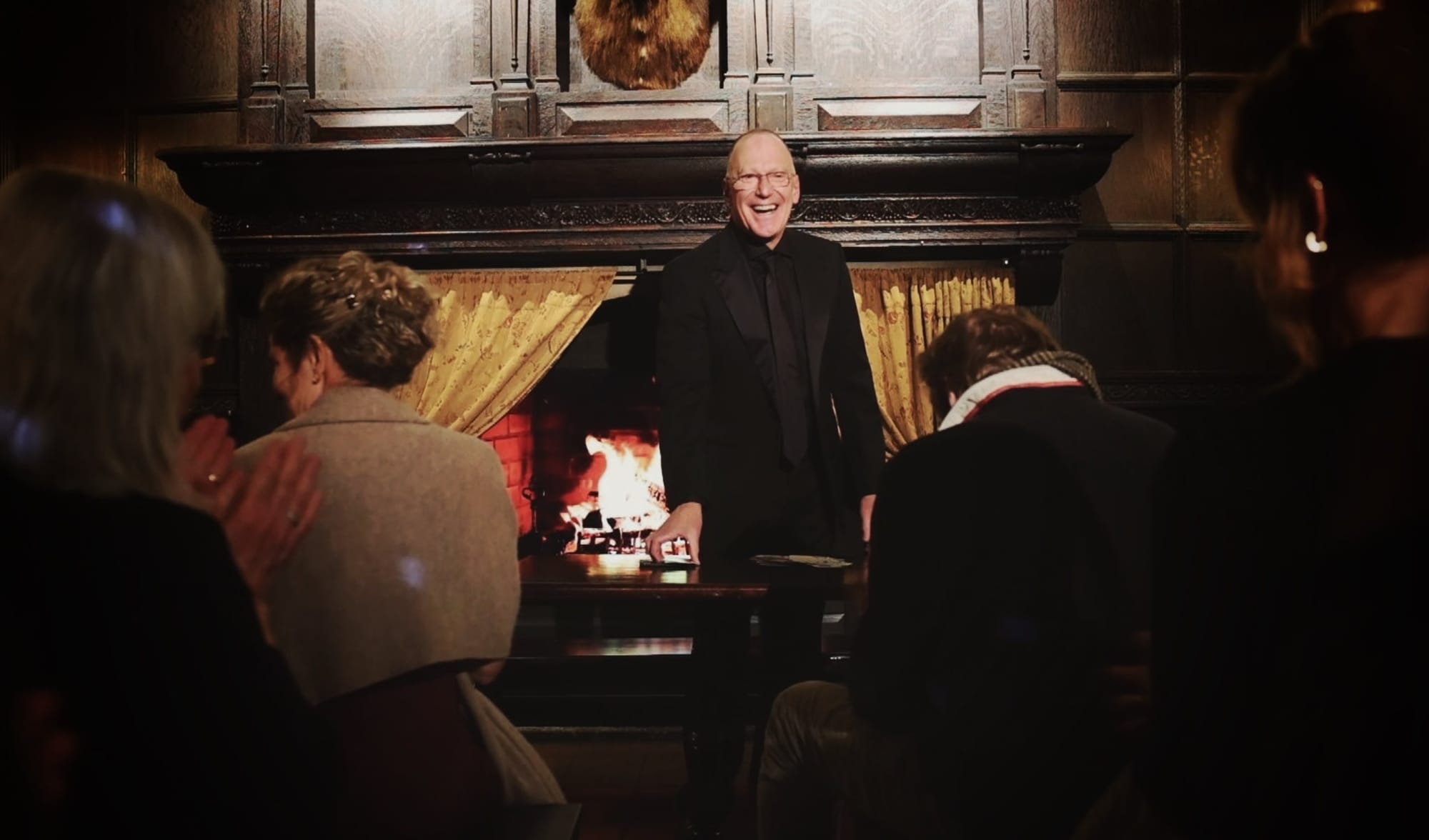
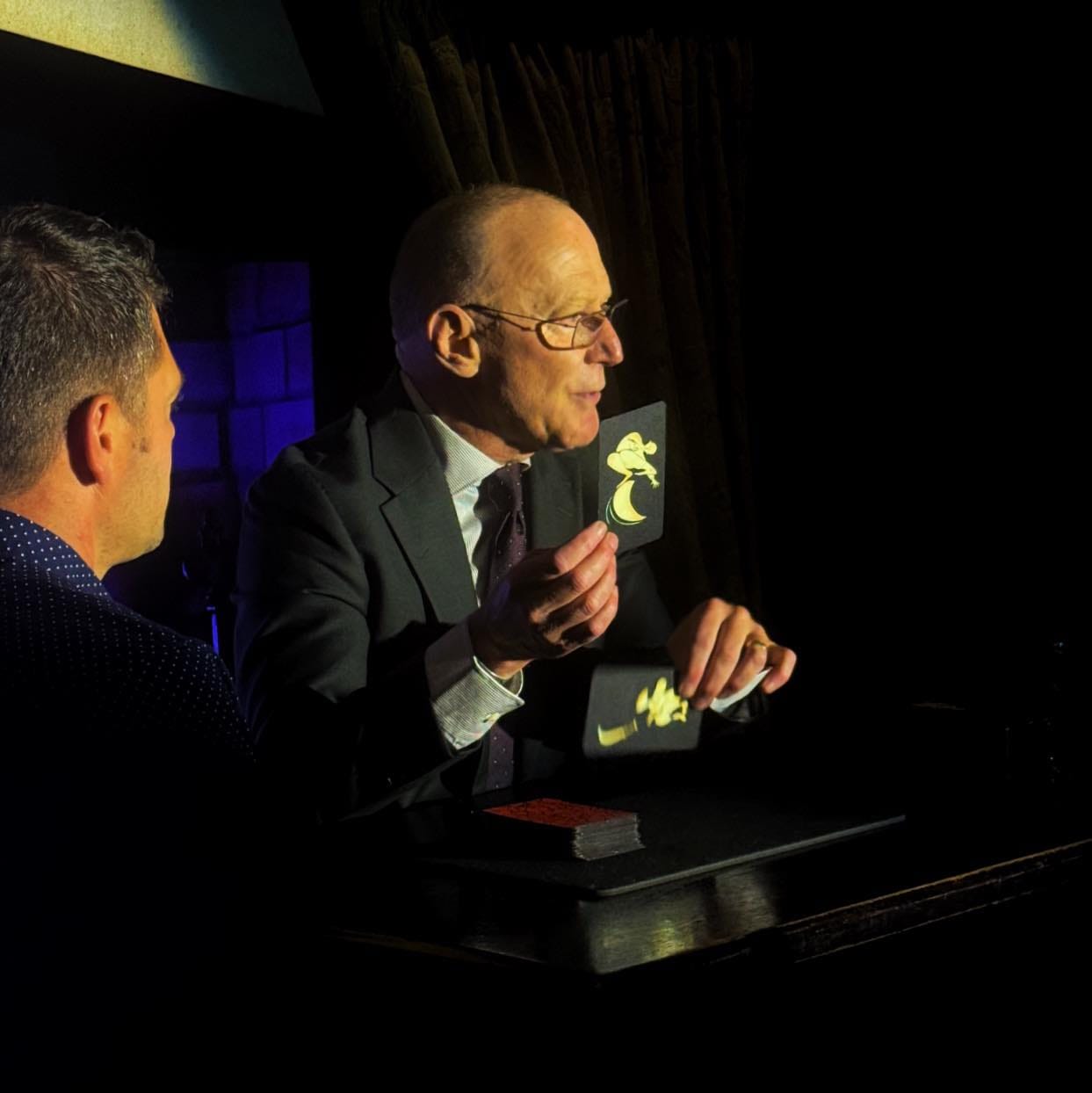
Michael: You not only read Tarot, you also perform with it. You’ve turned Tarot into this fascinating theatrical experience for audiences, from small groups to entire theaters, which I think is amazing.
How did you begin doing tarot shows? It’s not like anything I’ve ever seen before. I don’t even know how to describe it, except that it’s delightful and somehow everyone in the audience ends up getting a tarot reading of some kind by the end. It’s astounding, a little historical, and just a great time. How did that all come about?
Andy: Well, honestly, serendipity. It came about almost by accident. I was doing a show in D.C., and the producer said, “You need fifteen more minutes.” I said, “Oh, I need fifteen more minutes.” And he said, “You’ve been talking about Tarot and your grandmother, just read cards for the audience.”
So I added that segment. Up until then, I had never done any kind of gallery-style reading for an audience. And after the show, the producer came back to me and said, “You have to do that again tomorrow night.” I asked why, and he said, “Because everyone’s talking about it. They said it was a wonderful magic show, but that moment with the cards? That was real. That was amazing.”
So I did it again the next night, and it had the same effect. Even a magician friend who was there came up afterward, I had invited him on stage to pick one of the audience questions and he was baffled. He said, “I’m familiar with many methods… how are you doing that?” And I remember laughing, because honestly, I was amazed too.
That was the moment I realized, people really love this, and it’s not exploitative. You know, after years as a therapist, I’ve never wanted to use someone’s emotions or private experiences just to entertain others. So I’ve always been careful about that balance.
In The Woman Who Saw All, for instance, I had a moment where I asked if someone would like to share a memory of a loved one who’d passed, something that made them smile. It required real sensitivity, because I never want to use grief to drive a show. That’s not the kind of experience I want to create.
So when I started shaping a tarot show, that was the biggest question: How do you make something that can be very deep or personal into an uplifting, shared theater experience? Group therapy might be meaningful, but it’s not exactly entertaining. So it took a lot of thought, trial, and error to figure out how to make it work, how to balance humor and reflection without crossing that line.
The real turning point came when I was invited to perform for a group of magicians. I’d planned to do a very “magical” act, but it didn’t happen that way. I ended up on stage with an audience expecting me to answer their questions with tarot cards. I thought, “Well, this could be a disaster, but I’ll just treat them the same way I would any individual person: be playful, be supportive, and keep things moving.”
And it worked. It was terrifying for a few moments, but then I realized something: even in a crowd, people’s minds work the same way. As long as you’re authentic and connected, you can make it meaningful. And if you can find the humanity in it, link people together, get them supporting one another, it becomes communal magic.
That’s when I started experimenting with using mood and tone to shape the arc of a show, moving from humor to poignancy to hope. I took inspiration from a friend who knew the late performer Cashetta, who used to read everyone’s palms in a room. And I thought, “I’m going to do that with tarot cards.”
So I started running through the audience, giving everyone a card. They’d hold it up, and in a flash, I’d give them a quick interpretation. Suddenly, everyone felt personally connected to the experience. It became this big collective moment.
And the strangest, most wonderful part? At the end of a tarot show, people don’t want to leave. They stay, comparing cards, sharing their stories, talking to strangers. The cards become the connection, they’re the magic.
In a traditional magic show, people come up afterward because you amazed them. In a tarot show, they come up because the cards amazed them, and because they’ve connected with each other.
That’s what makes it so different and honestly, so joyful. I’m not tired afterward the way I am after a magic show. There’s no pressure of “Will this trick work?” It’s all about staying present, staying connected. There’s no passive audience member. We’re all in it together.
And because each audience brings new questions and new energy, every show is different. That’s what keeps it alive. It’s a new experience every night.






Michael: I’ve seen a few of your shows, and I have to say, they really fly by. They’re a delightful combination of genuine insights and theatrical storytelling. The best part is how, in various ways, you engage one person, several people, or even the whole audience. Every time you use the tarot to “tell fortunes,” so to speak, the sheer amazement and delight people express is remarkable. You can tell it genuinely resonates with them.
It’s a really unique show, and honestly, it’s hard to find the right words to describe it. It’s its own kind of experience. You might liken it most to a magic or mentalism show, or even the king of gallery readings that of spirit mediums do when they seemingly communicate with people’s deceased loved ones, but it’s really something separate. I also love that your deep knowledge of tarot history and the stories you share enhance the experience. It makes for an incredibly fun and memorable evening.
Advice for Magicians Using Tarot
Michael: I can see where magicians in the audience, like you mentioned, might be inspired to try using tarot in their own shows. What advice would you give to magicians who are interested in incorporating tarot into their performances?
Andy: I immediately know what I'd tell them: don’t turn tarot cards into a standard card trick deck. People already understand regular playing cards and card magic—they know the rules. Tarot is something completely different. It’s not about fooling someone; it’s about reflecting something meaningful about them or their future. I always tell magicians, respect that. Go with it. It’s far more powerful when someone leaves a show remembering something about themselves, rather than remembering that you found all the aces.
I had someone once want to do a three-card-monty-style trick with tarot, like, “Where’s the Devil? Where’s the Lovers? Where’s the High Priestess?” I said, just use a regular deck. That’s a great street trick, baffling on its own. Why attach it to something people associate with personal meaning and fortune telling?
If you’re going to use tarot, develop a routine that honors the deck’s unique qualities. Make it mystical, magical, something the audience can’t see in a regular card trick. And remember: tarot is about other people. It can be part of a story, but it’s different from a traditional card routine. The magic is about the audience’s own beliefs, feelings, and experiences. They’ll remember that far longer than they would a coin trick, a dove, or a bill transformation.
I also encourage magicians to consider the audience’s perspective. I was reading Ben Earl’s recent monograph, WTF. He emphasizes that many performers think only about their own execution and forget: what is the audience seeing, feeling, expecting? Magic happens in the audience’s mind. Tarot gives a chance to do something creative, entertaining, and meaningful by understanding how they view the cards, which is very different from how they view playing cards.
Michael: Yeah, I think if a magician just substituted tarot cards for a regular deck, it would be confusing. I can look at an Ace of Spades and instantly recognize it. But substituting a tarot card would add a cognitive load. It would make me think about it which takes me out of the moment... it just doesn't make sense to me.
Andy: Exactly. Especially with my cards, they’re not the pop culture tarot people might recognize. They’d have no idea what they’re looking at. So for magicians, it’s a missed opportunity to do something unique rather than duplicating what’s already out there. That would be my advice.
What's Next for the Tarot Shows?
Michael: So, where are you planning to go next with your combination of art and theater?
Andy: With the tarot show, my dream now is to expand it so it can reach a larger audience. Right now, the way I’ve designed the show works best with a more intimate crowd, up to about 60 people, so everyone can be involved. Last night, I was sitting in the theater watching a musical and thinking, “I have some ideas for making this work with a bigger audience while still giving everyone the feeling that they’re connected to what’s happening on stage.”
I’m considering a few technical adjustments so that people can visually lock in on the stage, as well as ways to structure the performance so even those in a balcony can feel engaged even if they can’t come down to the stage. It’s a bit like the old George Anderson Q&A style, how do you get the entire audience involved in something that’s happening largely in their minds? You’re holding cards, yes, but the magic is in the narrative, in the connection when someone thinks, “Yes, this is exactly what’s going on.” That connection with people is really what excites me.
One big goal would be to do a show at Town Hall in New York City. It feels like the kind of space that could evoke that old tent revival energy, intimate yet grand. In the more immediate future, I’m planning a show for Christmas, and then next spring I’ll be performing in the UK.
As for the cards, I’m getting ready for another print run. The first series sold out, and I have just a couple of books left, so it’s time for a new run.
Where to Buy the Spiritus Mundi Tarot Cards & Book
Michael: So that leads us to the most important question: where can people get these cards? How do they order them?
Andy: People can go to my website, TheSeer.net, and send a note through the contact form. I usually handle payments through PayPal or Venmo. Right now, I’m selling them only privately because I want to maintain the quality.
These are high-quality eggshell paper cards, they age beautifully. They’re not plastic; I didn’t want to add more plastic to the environment. The printer I use, Canelli in West Haven, Connecticut, does an amazing job. They print but don’t promote, so I like keeping the sales direct.
People have a few options. I generally sell the book and the cards separately. If someone just wants the full 78-card deck, they can have that. Or they can buy the book alone, which walks through examples using my cards, but the ideas can be applied to any deck. Personally, I think the two go beautifully together, but it’s flexible depending on what someone wants.
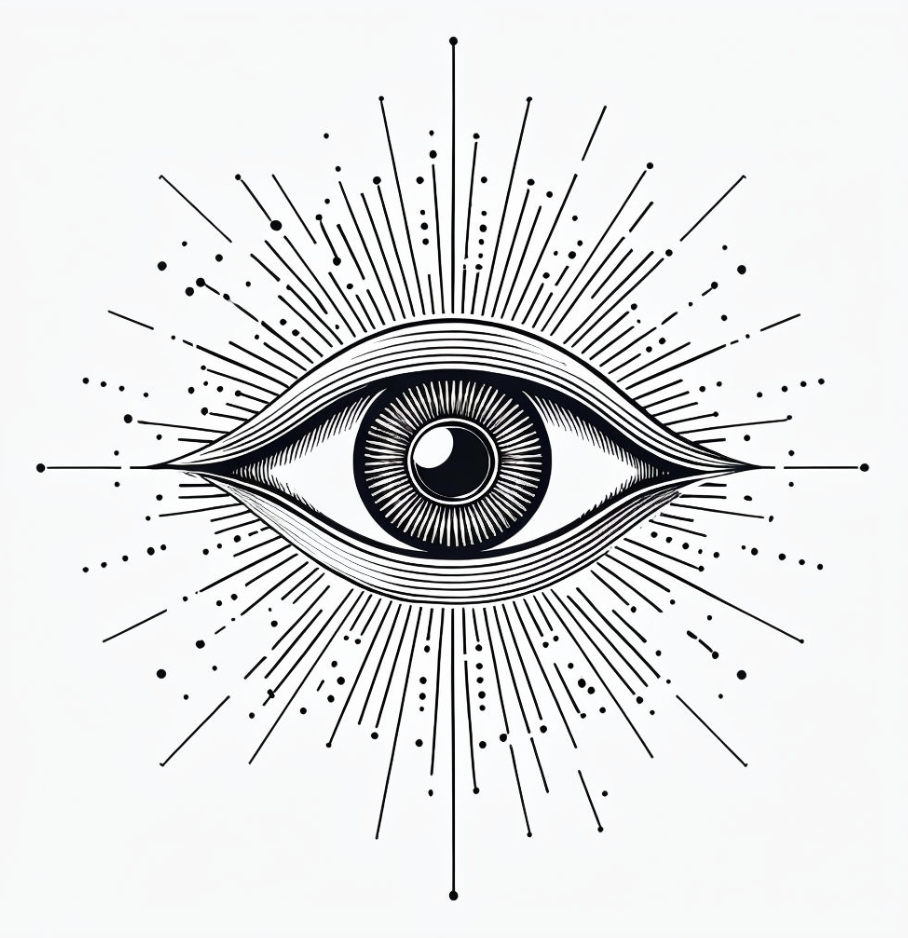
Andy Morgan's website: TheSeer.net
Andy: I’d also like to produce a series of instructional videos on reading cards. Right now, I’m gathering a collection of spontaneous readings, some one minute, some longer. Once I’m happy with the quality of the video and sound, I’m thinking about making them available to people who purchase the book and cards. That way, they can actually see readings in action, which makes it easier to overcome that initial hesitation and discover the joy of reading cards.
Michael: Well, Andy, thank you. This has been a fascinating look at how tarot can connect art, psychology, and wonder all at once. I really appreciate you taking the time to talk with us today.
Andy: Thank you so much. It's a pleasure, Michael.
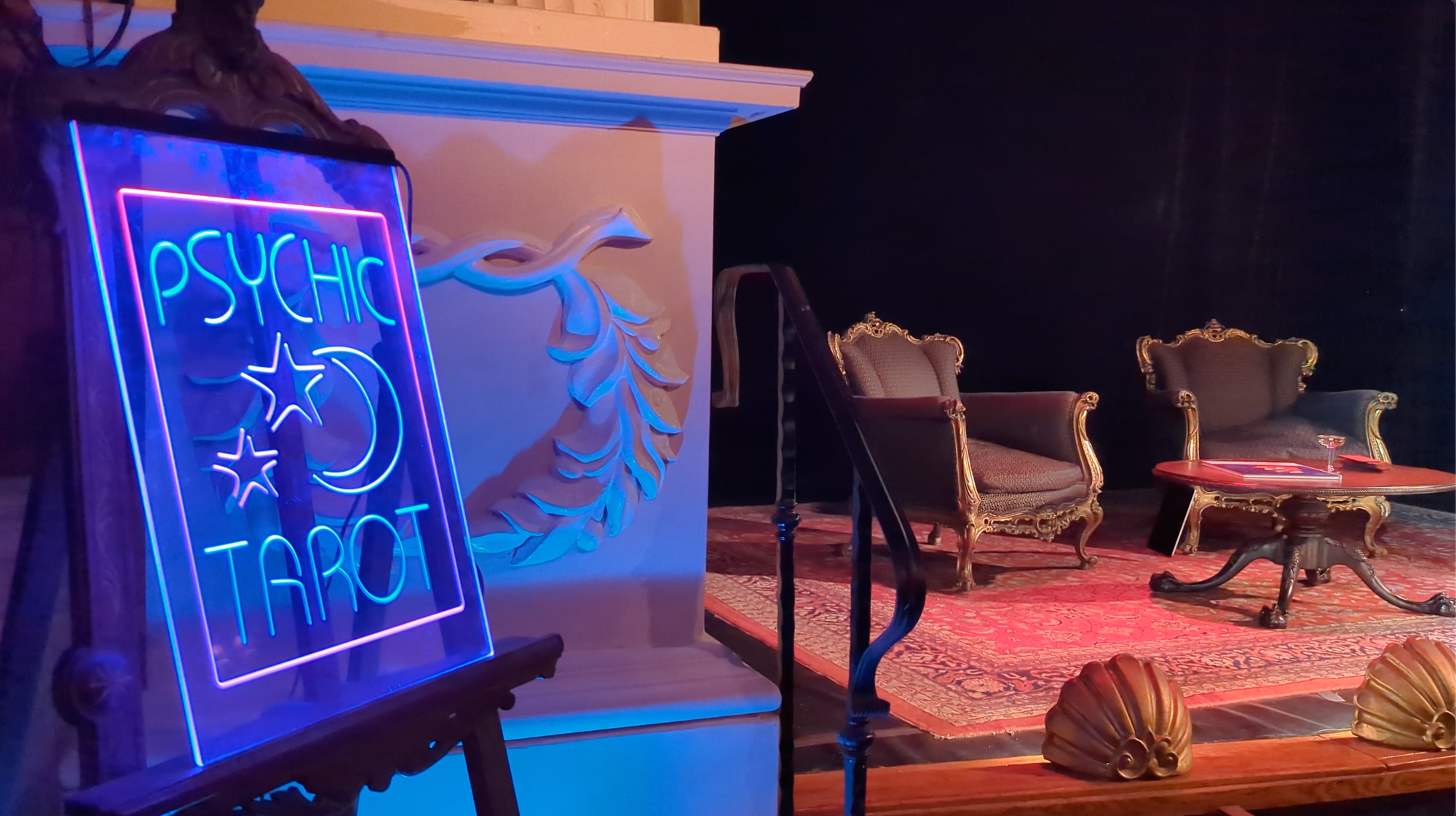



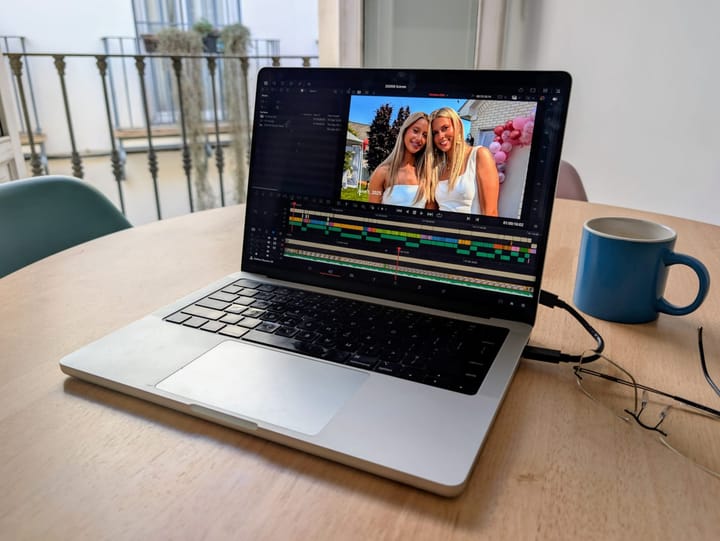
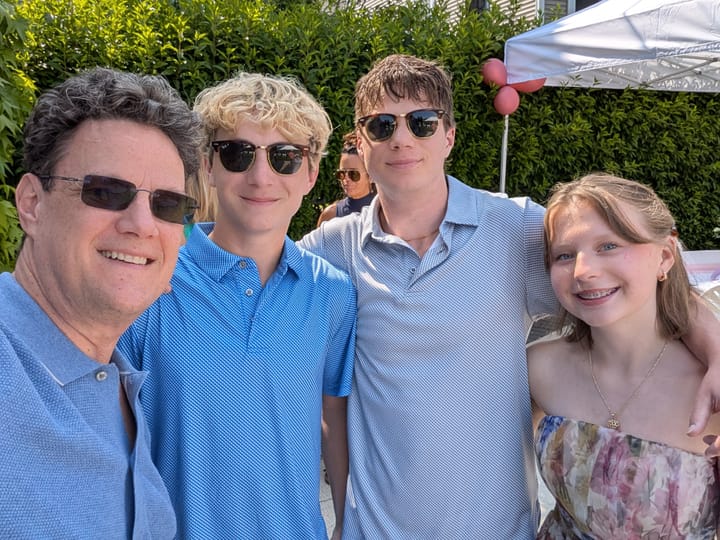
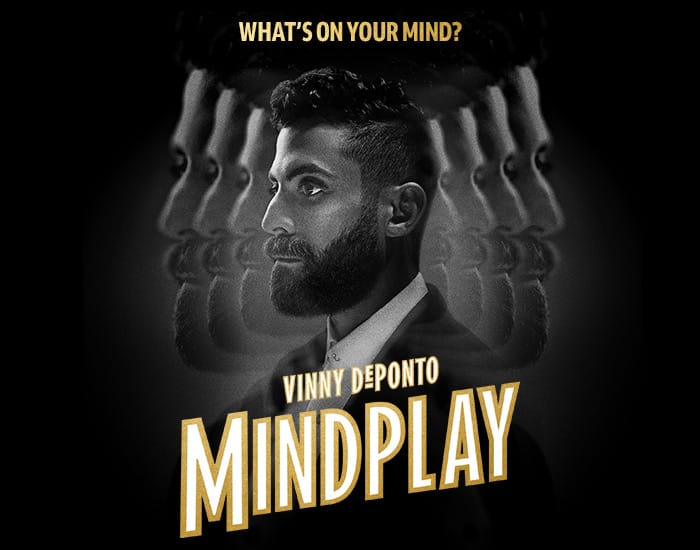
Comments ()